IT Infrastructure Series Episode 5
 Sunitha Shenoy
Sunitha ShenoyTable of contents
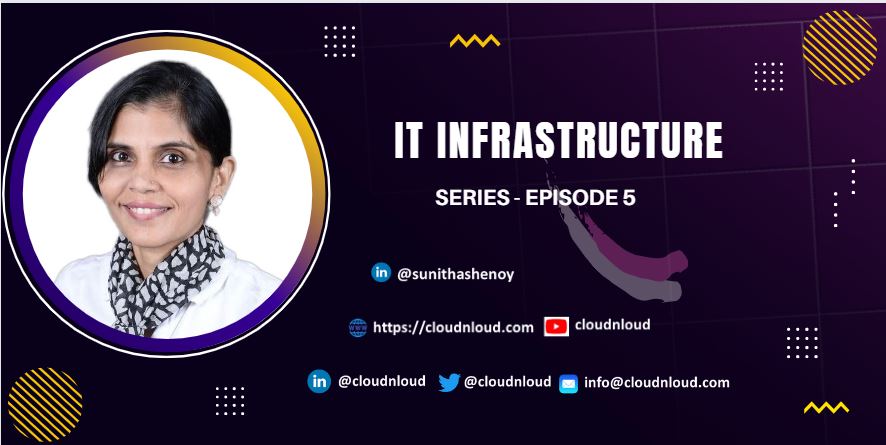
In the last 4 Episodes we discussed about Hardware and Software, this episode deals with Networking, one of the key components of IT infrastructure.
Various components work together to allow network to provide services and resources in an efficient manner.
Network infrastructures varies based on the below criteria's : • What is the size of the area it covers? • How many number of users are connected? • What Number and types of services are available ? Though as part of routers we covered about WAN, LAN etc. We will be dealing with it in detail here.
LAN : Local Area Network covers a small geographical area. It mainly interconnects devices in limited areas - e.g home, School campus, offices etc. Typically a single individual or org will administer LANs by controlling the security policies at network level. Also LAN is high speed bandwidth.
IP Addresses are assigned by a router to all the devices in a network and facilitates a common Internet connection between all devices which are connected. A network switch facilitates the communication by connecting to a router, though it does not handle the local network IP configuration or the Internet connection sharing. An Ideal tool for providing more number of LAN ports in the network is a switch
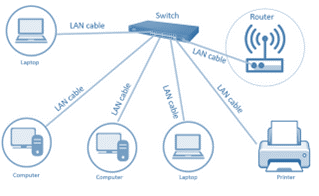
WAN : Wide Area Network covers wider area as the name suggests. WANs connects LANs across geographical areas (like cities, states, countries etc) and are administered by more than one service providers and hence the speed is lower compared to LANs
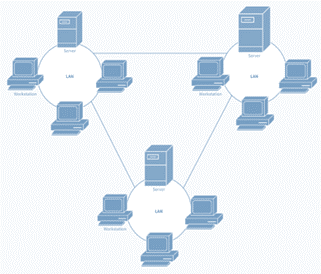
Apart from LAN and WAN there are a couple of more networks called the MAN - Metropolitan Area Network (Larger than LAN and smaller than WAN) and SAN - Storage Area Network exclusively for storage and retrieval of files
The communication with another network resource is done through Internet. The Internet is a global collection of interconnected networks working together to share information using common standards.
Internet connects the users and the organizations in various ways :
Internet Service Provider (ISP) is used by small offices, home users, remote workers who require connection. Other options are Broadbands, Wireless WANs and Mobile services.
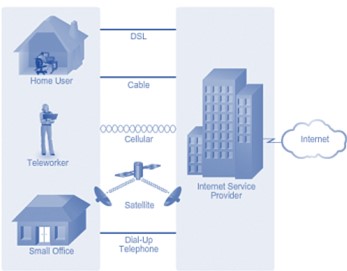
For larger organizations which require faster connections to support IP phones, accessing corporate sites, data storage, video conferencing facility use DSL, Ethernet and Leased lines.
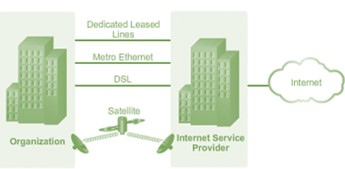
Network infrastructure contains Devices, Media and services
Devices and Media are the hardware components or the physical elements like laptop, PC and cables to name a few and intermediary devices like Firewalls, routers, switches etc which has been dealt in detail in the previous episodes. Few more examples of the devices are Printers, VOIP phones, Mobiles, security cameras and so on. Medium is carries the communication across a network. Few of the modern mediums are Metallic wires, fiber optic cables and wireless transmission.
Network Topology The visual representation of a network is called a Topology. Network topology defines the layout of the network consisting of physical topology and logical topology.
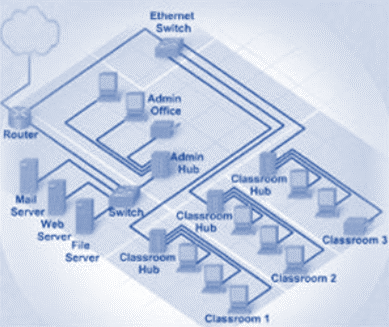 While the Physical topology describes the physical layout of the network the logical topology defines data or the communication flows across the network.
While the Physical topology describes the physical layout of the network the logical topology defines data or the communication flows across the network.
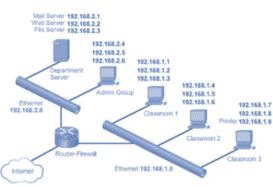
Types of network Topology will be dealt with in the upcoming episode.
Community and Social Footprints :
- Sunitha Shenoy
- GitHub
- YouTube Cloud DevOps Free Trainings
- Linkedin Page
- Linkedin Group
- Discord Channel
- Dev
Subscribe to our newsletter Read articles from Cloudnloud Tech Community directly inside your inbox. Subscribe to the newsletter, and don't miss out.
Subscribe to my newsletter
Read articles from Sunitha Shenoy directly inside your inbox. Subscribe to the newsletter, and don't miss out.
Written by
